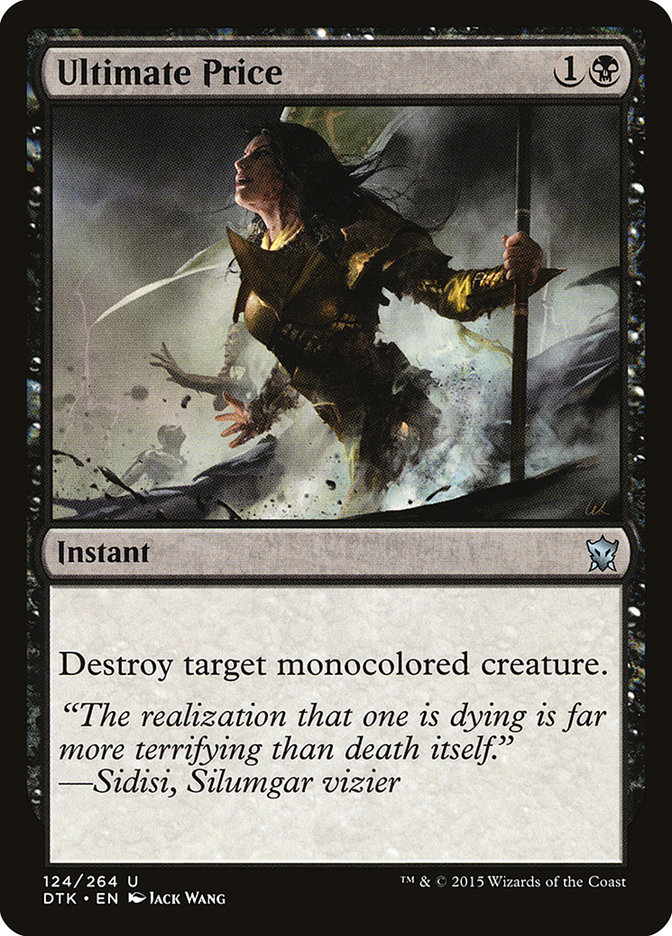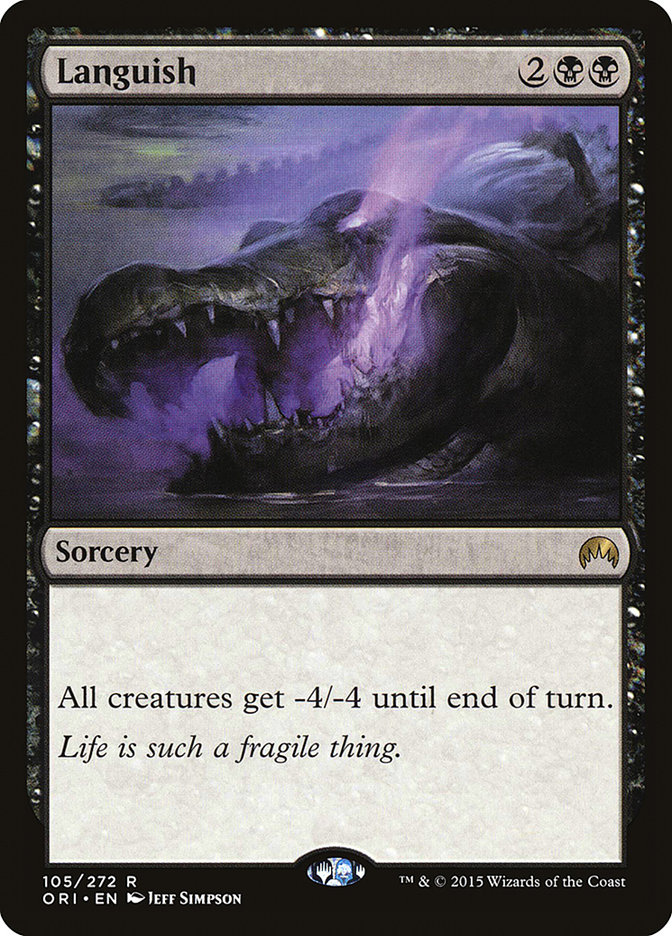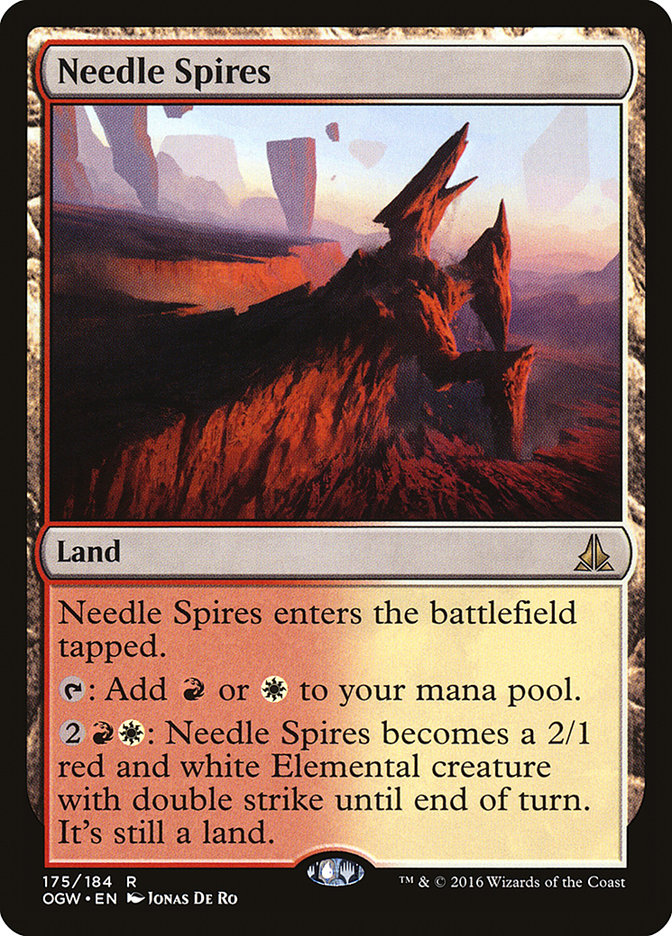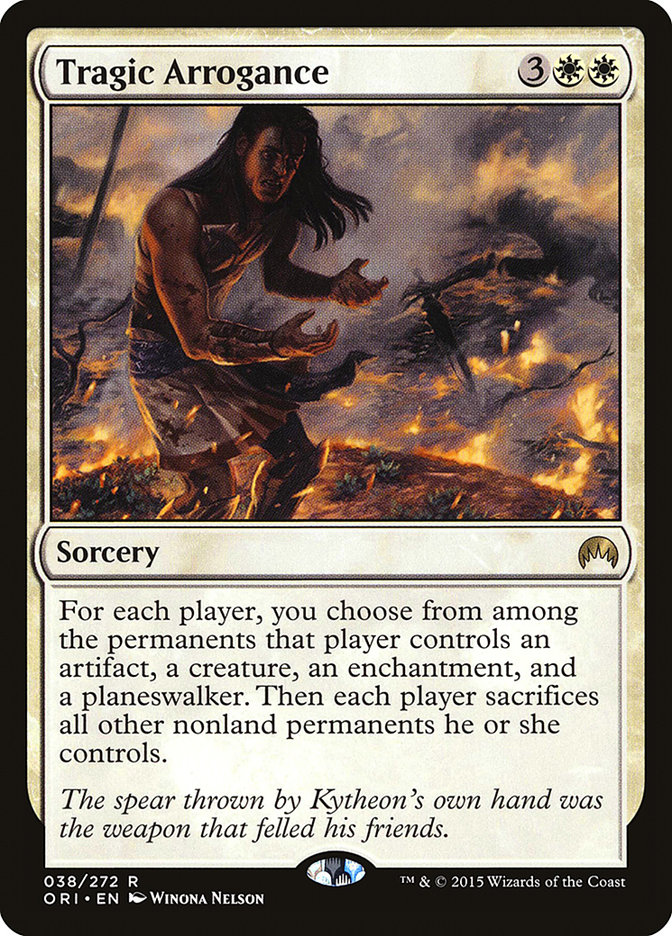I have a couple of things I wanted to talk about this week as it’s an exciting week for Magic: The Gathering. We have the release of Eldritch Moon upon us, and with it comes an exciting new Standard environment.
This week I’ll be taking to the skies and going down under to Australia to gather with the rest of Team Face to Face to grind out Standard and Eldritch Moon Limited. Many of you have Week 1 Standard tournaments, and the metagame is a vast unknown. Instead of talking about predicting a potentially unknown metagame, let’s discuss the approach we should have for the first week for any given future Standard format.
Take it with you to #SCGCOL.
In the first week of a format, and this applies to almost all formats, I think it’s of utmost importance to play a proactive strategy. It’s very commonly said that playing an aggressive deck early in a format is a good approach. I tend to disagree with this concept as stated and want to widen the range a bit.
Be proactive. Be the one presenting threats. This doesn’t necessarily mean being an aggressive deck as we know it; it just means we should be looking to be the one asking the questions as opposed to the one finding the answers.
Being reactive, or controlling, the first week of a new format is like throwing darts with a blindfold on. We can have a general idea of what kind of decks will be popular, but the unknown quantities are just too dangerous when we take this approach.
Removal spells in modern-day Magic tend to have some specificity clauses to them. By that I mean the most mana-efficient removal spells will often come with a clause that state we can only kill a specific type of creature.
Ultimate Price only kills monocolored creatures, Grasp of Darkness only kills creatures with four or less toughness, and even Languish, the format’s premium sweeper effect, suffers from the “only four or less toughness” clause. As a control player, we have to know our enemy to fit the right removal spells in our deck, and if we try to play too many expensive removal spells like Ruinous Path because they are “catch-alls,” we will often fall too far behind early in the game because Ruinous Path is both three mana and a sorcery.
Control decks are sometimes grasping at straws, looking to finally turn the corner if they can just answer that last threat. Unfortunately, our control player is stuck with an Ultimate Price in their hand while a Thought-Knot Seer makes short work of them. If they’d only played an extra copy of Grasp of Darkness, this would have been a match win, instead, a match loss. Don’t be this person the first week.
Some aggressive decks are great to play early, but the problem is a vast majority of them are fragile. Decks like Humans and Atarka Red have very defined weaknesses. Cheap removal or defensive creatures, backed up by a package of sweepers out of any number of decks or strategies, will generally be able to attack these decks efficiently enough to turn the corner.
If you are a player who really enjoys aggressive strategies and want to play an aggressive deck the first week, it’s certainly not a bad approach, as people will show up with poor manabases and poor mana curves, but I’d recommend spending some time finding ways around these easy-to-assemble packages that give aggressive decks fits. Look at the recent W/R Humans decklists that use Needle Spires out of the sideboard to leave a threat behind in the wake of a devastating sweeper.
This was a plan that developed over time to combat the uptick in Languish decks, but it could have been found as early as the first week; we know ahead of time when playing a deck like Humans how players will tend to approach the matchup, and what kinds of cards our deck is weak too.
If you’re going to play an aggressive deck, try to avoid being a glass cannon and find a plan to approach your deck’s weaknesses.
One of the reasons I think it’s important to be proactive is it’s much easier to identify what kinds of removal our opponents will play than what threats everyone will play. As I stated before, most efficient removal has a restrictive clause, such as Ultimate Price, and when we are able to present threats that are able to dodge these types of removal, it makes it much easier to win any individual game.
For example, at Pro Tour Shadows over Innistrad, we as a team knew the best way to beat a deck like Humans was to play Languish. Languish covers almost all other forms of aggressive decks and was also quite a good card against Bant Company. Bant Company, though, has the card Collected Company, which is exceptionally good because it can refill the battlefield at instant speed on the opponent’s “Languish turn” which actually made the Languish decks bad at fighting Bant Company. This meant that Languish decks in general would be good against Humans, but at the same time poorly positioned against the other most popular deck in the format.
If we wanted to be proactive and beat Languish decks, we had to pick a different type of threat such as planeswalkers or five-toughness creatures, but we also wanted to prey on Bant Company and Humans. Early reports were that G/W Tokens was poor against Humans, but as I said before, aggressive decks tend to be quite easy to beat if you devote some extra sideboard cards to the matchup. This was an early mistake we made as we didn’t fix the problem early and instead moved on to trying other ideas instead of trying to fix what turned out to be a very fixable problem. By playing planeswalkers, we were able to beat Languish decks. When we combined the planeswalkers with cheap creatures to gum up the ground and sweeper effects like Archangel Avacyn and Tragic Arrogance, the Humans matchup got much easier.
When we can identify the types of removal people will play in the format, we can try to find threats that line up well against this removal, build an appropriate deck with these threats, and continue to be proactive without having to be fragile. This is the ideal scenario for the first week of almost any format.
For Week 1, I will almost always play a proactive strategy myself, but I don’t think you need to try to come out of the gates as quickly as possible; as long as you’re presenting powerful and resilient threats, you should see wins start to pile up.
My Hall of Fame
With the last Pro Tour of the year comes Hall of Fame season. This is an exciting time for us as Magic players to reflect on the careers of our favorite players and honor some of them with the highest honor Magic has for a player, a Hall of Fame induction. As for this year, I’m not fully finalized weighing who I want to vote for, so I will not include this year’s final ballot. However, I’d like to share my thoughts on what the Hall of Fame means to me, and how I plan to vote in the future.
This is the first year I’m eligible to vote, and it means a lot to me. I’ve been around a long time in this game, and have gone through year upon year watching the excitement and talk about the Hall of Fame. It seems to me there are a bunch of schools of thought on what kind of career should be inducted. People scour over the stats to find the most worthy candidates and compare them with players past and present.
I understand the Pro Tour Hall of Fame is, and should be, about honoring the best players, and we should have a standard as to who meets this guideline, but it’s not all about statistics to me. Stats won’t rule my vote.
Magic is something I’ve devoted most of my life to. I want Magic to be here for years and years, and with it I want the folk stories and folk heroes to live on with the game. I want the stories I lived through to be the stories my kids hear someday if they chose to take up the game.
Let me explain what I mean. I travel to a lot of tournaments with a lot of different people. I see the community in these various cities, and see how the players at the local level react to various professional players. Players get asked for autographs and pictures and players are happy to oblige and move on with their day.
I see more people excited to talk to Shahar Shenhar than anyone else. Families, children, and adults all excited for their chance to meet Shahar, the back-to-back World Champion. These fans of Shahar are truly inspired by his story. I know he’s not eligible this year, but I’ve had countless discussions with voting players, telling them that if he was eligible, I’d still vote him in with no Pro Tour Top 8s. Shahar’s story is incredibly unique as such a young player winning back-to-back World Championship titles in such a dramatic fashion.
A story like this, the first back-to-back World Champion, is a story that should be remembered and told to future generations of Magic players. Seeing firsthand the reaction Shahar gets when entering a room shows me that he deserves to be recognized as the inspirational story he is. We need to remember this story. I don’t want this story to be forgotten, so when his time comes, even if Shahar doesn’t pad his stats any more, I will be hard-pressed to not vote for him.
I know it’s the “Pro Tour” Hall of Fame, and Shahar has shown he can play with the best on the Pro Tour and succeed; he doesn’t need to Top 8 one or two of them to prove it to me, though I have all the confidence in the world that, if he wants to, he will continue to succeed.
Needless to say, I want to recognize the game’s truly elite players as well. I saw Paul Rietzl make a statement this week, saying it would be nice to use the metric, “Would I be scared to be paired against this person in their prime?” Another metric I liked was, “Does this player have a claim to be the best player in the world at any point in time?” I like using these types of criteria in addition to raw statistics because it proves to me the amount of respect a player of this caliber held in their time. Someone known as the best, or feared by their peers at highest levels, also deserves to be remembered as being one of the game’s elite.
I do think results are important, but I don’t think statistics truly tell the whole story of an individual. I want the inspirational stories to be remembered and revered, just as much as I want it for our game’s fiercest competitors. The players who devote their lives to this game and this community deserve to be honored in some way. Right now that way is the Hall of Fame. This is what the Hall of Fame means to me.
I’d be interested in hearing what it means to you.






